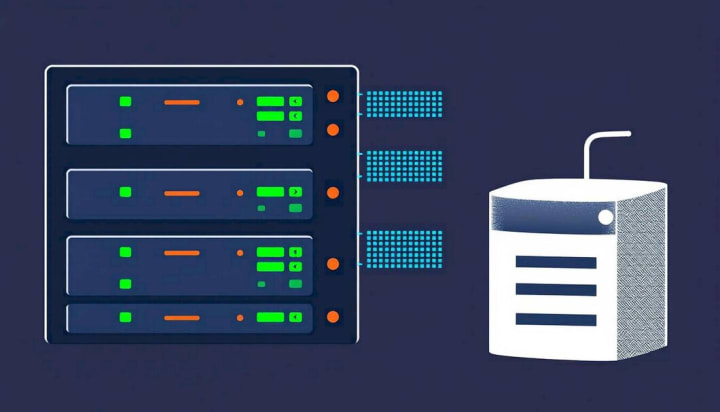
When evaluating a server load balancer, it’s imperative to understand the essential features that can significantly impact its effectiveness in your network architecture. One of the primary features to consider is health monitoring, which allows the load balancer to continuously assess the status of each server in the pool. By regularly checking for responsiveness and performance metrics, the load balancer can intelligently route traffic away from unhealthy or overloaded servers, thereby ensuring users are directed to the most reliable resources available. Additionally, SSL termination is a crucial capability for enhancing security and performance; it involves decrypting SSL/TLS requests at the load balancer level before forwarding the unencrypted traffic to backend servers. This not only reduces the processing burden on individual servers but also enables centralized management of SSL certificates, simplifying the maintenance of secure connections.
Server Load Balancer Vs. Traditional Load Balancing: What You Need To Know
Understanding the distinctions between a server load balancer and traditional load balancing techniques is crucial for organizations aiming to optimize their network performance. Traditional load balancing often relies on basic techniques, such as round-robin DNS or simple IP-based distribution, which do not provide the intelligence or adaptability that modern applications demand.While these methods can help distribute traffic to multiple servers, they lack the advanced features necessary for dynamically managing real-time traffic loads and server health. In contrast, a server load balancer utilizes sophisticated algorithms and monitoring capabilities to assess server performance continuously and make informed routing decisions based on various factors, such as server load, response time, and health status.

Why Every Business Needs A Server Load Balancer For Scalability?
The importance of a server load balancer in achieving scalability cannot be overstated, particularly in a business landscape where digital interactions continue to rise. As organizations grow and user demands fluctuate, the ability to efficiently scale applications is vital for maintaining performance and user satisfaction. A server load balancer plays a pivotal role in this process by distributing incoming traffic across multiple servers, thus enabling seamless scaling during peak periods.
This not only prevents individual servers from becoming overwhelmed but also allows businesses to allocate resources dynamically based on real-time traffic patterns. For instance, during major promotions or events, websites may experience sudden surges in traffic; a server load balancer can automatically redirect requests to underutilized servers, ensuring that no single server bears the brunt of the load.
The Impact Of A Server Load Balancer On Application Availability And Reliability
A server load balancer significantly enhances application availability and reliability through its intelligent traffic management capabilities. By distributing incoming requests across multiple servers, the load balancer mitigates the risk of server failures impacting user experiences. In the event of a server going offline or becoming overloaded, the load balancer can automatically redirect traffic to
alternative servers that are healthy and responsive, ensuring uninterrupted service. This failover capability is crucial for businesses that rely on their applications for critical operations, as it minimizes downtime and enhances user trust. Furthermore, server load balancers utilize health checks to monitor server performance continuously, assessing factors such as response times and error rates.
Top Benefits Of Implementing A Server Load Balancer In Your Network
Implementing a server load balancer in your network architecture brings a multitude of benefits that enhance operational efficiency and user experience. One of the primary advantages is improved resource utilization, as the load balancer ensures that incoming traffic is evenly distributed across all available servers. This prevents scenarios where some servers are underutilized while others are overloaded, optimizing resource allocation and reducing operational costs.
Additionally, server load balancers enhance application performance by reducing response times; by intelligently routing requests to the least busy servers, they can deliver faster load times for users, which is particularly critical for applications with high concurrency requirements. Enhanced security measures also come into play; many server load balancers provide built-in features such as SSL termination and web application firewalls (WAFs) that protect backend servers from malicious attacks, thus fortifying the overall security posture of the network.
How A Server Load Balancer Facilitates Efficient Traffic Distribution?
Understanding how a server load balancer facilitates efficient traffic distribution is essential for appreciating its role in modern network architecture. At its core, a server load balancer acts as a reverse proxy, sitting between client devices and backend servers to manage and optimize the flow of incoming traffic. It employs various algorithms to determine the most efficient way to distribute requests among the available servers. Common algorithms include round-robin, which distributes requests sequentially, and least connections, which sends traffic to the server with the fewest active connections. This intelligent routing ensures that no single server is overwhelmed, allowing for consistent performance even during peak traffic periods.
Server Load Balancer Architecture: An In-Depth Look At Its Components
An in-depth look at server load balancer architecture reveals the critical components that contribute to its functionality and effectiveness in managing network traffic. At the forefront is the load balancer itself, which serves as the central processing unit that makes intelligent decisions regarding traffic routing. The load balancer can be deployed as hardware appliances, software solutions, or cloud-based services, each offering different benefits depending on the
organization’s needs and infrastructure. A key component of the load balancer is its algorithm engine, responsible for implementing various traffic distribution algorithms, including round robin, least connections, and IP hashing. This engine works in conjunction with health monitoring mechanisms that continuously assess the status of backend servers.
Conclusion
In conclusion, the significance of server load balancers in contemporary IT infrastructure cannot be overstated. They serve as a foundational element in optimizing application performance, enhancing scalability, and ensuring high availability and reliability. By effectively distributing incoming traffic across multiple servers, server load balancers mitigate the risk of server overloads and downtime, thus improving resource utilization and user satisfaction. The essential features of modern load balancers, including health monitoring, SSL termination, and advanced traffic routing capabilities, contribute to their effectiveness in managing dynamic workloads and ensuring seamless user experiences. Additionally, the comparison between server load balancers and traditional load balancing methods highlights the advantages of adopting a more intelligent and adaptable approach to traffic management.






